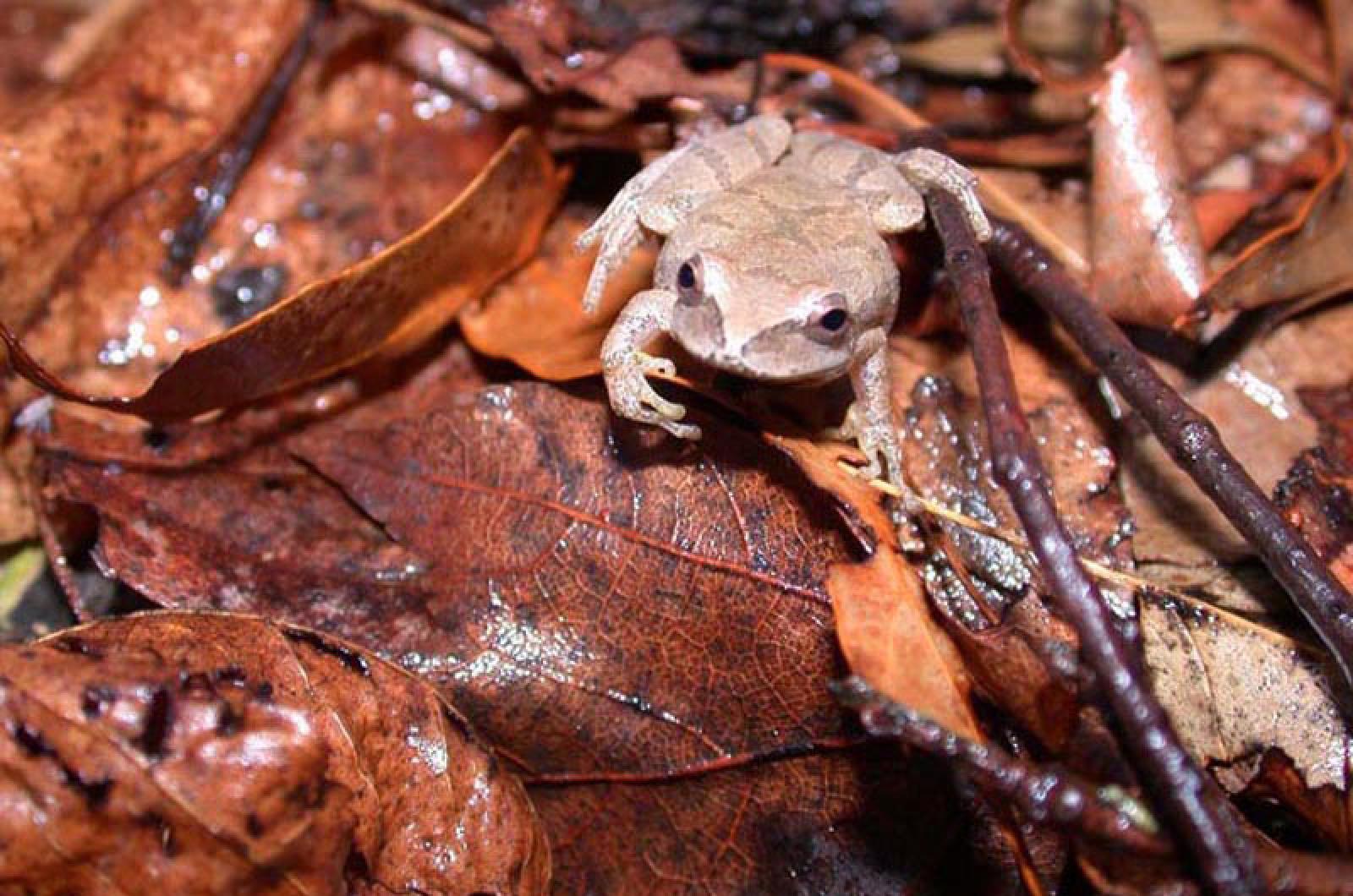American country singer Johnny Lee crooned about looking for love in all the wrong places. Local amphibian Romeos might change those lyrics to looking for love in all the right places as they warble their wetland serenade.
Male spring peepers have begun their lustful calls, an annual miracle of trying to outdo each other to find a mate. For so many of us, it is a welcome sign that spring is coming.
Spring peepers, called pinkletinks on Martha’s Vineyard (and nowhere else in the world), have charmed more than each other over the centuries. Perhaps because of their annual appearance and their loud and obvious cacophony, people have observed and described them for a very long time.
Of course, one must begin with Indigenous tribes for a history of peeper names. Dr. Frank Waabu O’Brien, historical consultant and former president of the Aquidneck Indian Council with the Rhode Island USGenWeb Project, identified some Native names for frogs in American Indian Studies In the Extinct Languages of Southeastern New England. A jumping animal or croaker frog was described in Algonquian (O’Brien’s spelling) as tinógkukquas, kopiauss, or kupýãs (Pequot) and a small toad was called tinnogkohteas.
Fast forward many years to a German explorer, ethnologist and naturalist with a very long name. Prince Alexander Philipp Maximillian zu Wied-Neuwied travelled and explored Brazil and, later, the United States during the early 1830s. Prince Max, as he was known, started in Boston and travelled west with Swiss painter Karl Bodner, describing people and documenting wildlife along the way. More than 20 species have been described by or named for him, including spring peepers, which he called hyla crucifer.
At the same time, an American was also identifying and naming the same (and many other) species. John Edwards Holbrook, who became known as the father of North American herpetology, also christened our beloved little peeper. He called them hylodes (and hyla) pickeringii and published that name and many others in his tome, North American Herpetology; or A Description of the Reptiles Inhabiting the United States.
Ultimately none of those names won the day for branding spring peepers. That honor goes to modern herpetologists who determined that, genetically, these frogs belonged in the genus pseudacris, or chorus frogs, deciding on the species name crucifer. Pseudacris crucifer means false locust with a cross, referring to their calls and the markings on the back of this paperclip-sized frog.
Don’t call them late to the party, though: they are one of the species that kick off the start of the coming season. Red-winged blackbirds, snowdrops and a few other species precede these frogs’ arrival but they will never take precedence for many of us over these amphibian heralds of spring. All of these seasonal sentinels will be followed by ephemeral spring flowers, insect arrivals and many other species that help push us further away from winter’s dormancy.
Those plus the extra daylight and warmth provide reason for celebration. And, of course, romance. In the end of his song, Johnny Lee found his one true love:
“You came knockin’ on my heart’s door, You’re everything I’ve been looking for….”
As they have for millennia, pinkletinks too will find their own precious peeper partner and they might, as Lee declared thankfully,
“Find a friend and a lover and bless the day they discover her, You, oh you, lookin’ for love.”
Suzan Bellincampi is islands director for Felix Neck Wildlife Sanctuary in Edgartown and the Nantucket Wildlife Sanctuaries. She is also the author of Martha’s Vineyard: A Field Guide to Island Nature and The Nature of Martha’s Vineyard.







Comments
Comment policy »